
Roan Mountain Magazine



Pam Braswell (423) 895-9993
Broker/Agent
TN and NC

Janelle Jones (828) 260-1720
TN and NC

Doug Canter (423) 483-4971
TN
Randy Robinson (407) 928-0005
TN

Chris Cornett (828) 504-0537
TN

Marsha Hoilman (828) 766-9803
TN and NC

Kat Spradling (828) 387-6977
TN
Linda Zoldy (910) 977-1752
TN









Roan Mountain Magazine
Volume 2, Issue 2
October 2025
STAFF
PUBLISHER/EDITOR
Amy Thurman
amy@roanmountainmagazine.com
ASSISTANT EDITOR
Ericka Hughes
GUN TALK WITH JON
Captain Jon Strydom
NEWS FROM THE ROAN CeCe Studer
PEACE OF MIND WITH CHRIS
Christopher Adams, LCSW HIGHLANDER HIGHLIGHTS
Cloudland High School Yearbook Staff
THE GRACE PLACE
Reverend Hunter Greene
SHORT STORY AUTHOR
Diana Tolley
THE LAST WORD
Noah Blair
STAFF PHOTOGRAPHER
Faith Lynn
ADVERTISING DIRECTOR
Susie Phillips
susie@roanmountainmagazine.com
SOCIAL MEDIA MANAGER
Colleen Gainey
DISTRIBUTION MANAGER
Jay Rich
CONTRIBUTORS
Jonah Hilmon
Copyright © 2025
All content herein is copyright protected and may not be reproduced in whole or part without express written permission. Roan Mountain Magazine is published monthly and can be found at multiple locations throughout the Roan Mountain area, free to readers. For print subscriptions, please contact us for info. (423) 440-9012

Read the Digital Version at: RoanMountainMagazine.com
Visit us on Facebook: https://bit.ly/RMM_Facebook
Roan Mountain Magazine is printed by the Elizabethton Star
Letters to the Editor:
We would love to hear from you! Questions, comments, ideas, or whatever you’d like to share, please send to Amy: amy@roanmountainmagazine.com
ARTICLES & FEATURES
19 Music Spotlight
Ericka introduces us to The Ada Khoury Band.
21 PathForward Solutions
A new organization in town helps folks work towards bettering their lives.
21 Good News Club
Students enjoy dynamic Bible study in this after school program.
22 Hauntings & Local Legends
Ericka shares a host of local spooky stories:
23 Delinda
24 Victoria Carter
25 The Lost Big Toe
26 Ghost Lights of Brown Mountain
28 Bloody Bones
30 Ghost Bull of Roan Mountain
33 From On High
A poem from Jonah Hilmon.
35 October Fun
Info about the Fall-O-Dendron, the Fall Festival, and Trunk-or-Treat
36 Jarrett's Orchard
A visit with the Jarrett family at their apple orchard.
42 All Holler's Eve
A spooky short story by Diana Tolley
Editor’s Letter
Gun Talk with Jon Taste of the Roan Peace of Mind with Chris News from the Roan Highlander Highlights The Grace Place Fun Page
Lessons in Life/Landscaping The Last Word
ABOUT THE COVER:
This photo was taken in front of the apple house at Jarrett's Orchard. See the article starting on page 36.
Photo by Amy Campbell Clark


When I was a kid living in southeastern Missouri, I seemed to spend half of every season waiting for the next one. Halfway through winter, I was tired of the cold, tired of being inside, and couldn’t wait for spring. Halfway through spring, I was tired of sitting in a classroom and couldn’t wait for summer and school to be out. Halfway through summer, having had the break I needed, I couldn’t wait for school to start again and the garden to be done for the year so I didn’t have to pull weeds anymore. And halfway through fall, I couldn’t wait for winter, for Christmas, for snow, and the possibility of snow days.
Then later, as an adult, I lived in a subtropical climate for over 30 years and the seasons were hard to distinguish from each other. Most of the time, we really only had three: Summer (lasting from April to October), late summer (lasting from November to February), and early summer (March, and sometimes part of April).
Now, living in a climate where we have all four seasons, fall is one of my favorites. Right up there with spring, summer and winter! Maybe it’s because I’m older and more patient now, or maybe because it’s still so new to me, but I truly do enjoy each season, from one end of it to the other. I don’t spend half of each wishing for the next. Instead, I enjoy each while it lasts, then welcome the next in.
There’s a lot to love about fall.
Gazing out over the mountains surrounding my house and noticing new spots of color as the leaves turn, or driving around a bend in the road and seeing a wash of vibrant color that wasn’t there two weeks earlier when I’d driven the same road. Those brilliant reds, yellows and oranges that almost glow on sunny days and provide bursts of cheer on drab overcast days.
The cool, crisp mornings and evenings that carry the scent of those changing leaves in the air. And it’s the best sleeping weather! Leaving the windows open, even on the really cool nights, and snuggling under a pile of blankets, usually with a fur kid or three curled against my legs for extra warmth.
This is also the perfect time of year to sit around a firepit with friends, passing time and sharing stories.
I get the itch to crochet again this time of year. I seldom do in the summer – even with the AC on, it just never feels right to have yarn draped over my lap when it’s warm out. But in fall, it’s time to get back to it. This year the projects on my list include gifts for a couple of friends and a couple new throw blankets for my own use. Maybe I’ll even learn how to follow a pattern and expand what I can make!
Food is also one of the best parts of every season. Simmering a pot of homemade soup or chili on the stove for hours, using vegetables preserved from my summer garden, and making the house smell amazing. And one of my favorite vegetables are coming into season soon. Collard greens are always best after the
It's Fall, Y'all!
As much as I love my garden and growing vegetables, it’s still good to put it all away. Picking the last of the peppers and preserving them, dehydrating the last of the herbs (which also makes the house smell good), then time off from all those summer garden chores.
Cool weather clothing also makes me happy. Worn, comfortable jeans, and my absolute favorite: flannel shirts (see Noah’s column to learn about the history of this cool weather staple). I’ve also recently discovered how cozy merino wool socks are. They keep my feet warm and add an extra layer of comfort to my trusty hiking boots.
The shorter days have their upside too. I’m not as likely to look at the clock and realize that supper should have been hours ago, so my work days tend to be a little shorter and there’s more time in the evenings to do things I enjoy. Time with family and friends, trying new recipes, reading a good book, watching history documentaries or a good movie (while crocheting, of course), or whatever else sounds interesting at the moment.
It’s fall. Snuggle up and enjoy it! I am!
See you 'round the Roan!
Amy Campbell Clark Editor amy@roanmountainmagazine.com
first frost!
Fall colors highlighted by sunrise.








suppressors, commonly known as silencers, are devices attached to the muzzle of a firearm to reduce noise and muzzle flash. While often misunderstood due to their portrayal in movies, suppressors do not eliminate sound but significantly dampen it, protecting the shooter’s hearing and reducing noise pollution, and can conceal the shooter’s location.
The concept of suppressing firearm noise emerged in the late 19th and early 20th centuries, paralleling advancements in firearm technology. The earliest concept of modern suppressors was patented in 1899 by John M. Browning, who designed a "sound moderator" for small-caliber firearms. However, the first commercially successful suppressor was invented by Sir Hiram Maxim, son of machine gun inventor Hiram Stevens Maxim, around 1902. Maxim’s design, patented in 1909, was inspired by his work on mufflers for internal combustion engines. His silencer consisted of a cylindrical metal tube containing a series of chambers that allowed propellant gases to expand and dissipate gradually, reducing the explosive sound of a gunshot. Marketed as the Maxim Silencer, it was initially sold for sporting and civilian use, particularly for hunters and target shooters seeking to minimize noise.
During World Wars I and II, specialized units, such as snipers and covert operators, used suppressors to conceal their positions. The Welrod pistol, a suppressed firearm developed by the British during World War II, was probably the best "silenced" weapon ever, combining a suppressor with a low-velocity cartridge and a bolt action for near-silent operation.
The development of suppressors advanced significantly in the post-war era, driven by material, science and engineering innovations. Early suppressors were bulky and heavy, limiting their practicality. In the mid-1900s, manufacturers began experimenting with materials like aluminum and titanium, for lighter weight and durability.
The internal design of suppressors also evolved, with engineers refining the concept of baffles— internal partitions that disrupt and slow the escape of propellant gases. The “stacked baffle” design became a standard, featuring a series of conical or flat baffles that create turbulence, reducing sound output. This design remains common in modern suppressors due to the balance of effectiveness and simplicity.
In the late 20th and early 21st centuries, suppressor technology adapted to meet specific needs. Monolithic core suppressors, machined from a single piece of metal, improved durability and reduced manufacturing costs. Modular suppressors, which allow users to adjust the length or configuration, gained popularity for their versatility across different firearms and calibers. Reflex suppressors, which extend backward over the barrel, maximize internal volume without significantly increasing the firearm’s overall length.
GUN TALK WITH JON
Suppressors
By Captain Jon Strydom (aka African Jon)
Additionally, advancements in computer modeling and fluid dynamics have enabled manufacturers to optimize baffle geometry, improving sound reduction and minimizing backpressure—the buildup of gases that can affect a firearm’s cycling. Modern designs incorporate advanced materials like Inconel and carbon fiber, enhancing performance under extreme conditions.
Suppressor designs also vary by firearm type. Pistol suppressors, for example, often incorporate a Nielsen device, or booster, to ensure reliable cycling in semi-automatic handguns, as the added weight of a suppressor can disrupt the recoil mechanism. Submachine gun and rifle suppressors, like those used on the MP5 or AR-15 platforms, prioritize durability and heat resistance due to higher firing rates. Rimfire suppressors, designed for .22 caliber firearms, emphasize lightweight construction and ease of cleaning due to the heavy fouling produced by rimfire ammunition.
The use of suppressors raised concerns about criminal misuse, leading to their regulation in the United States under the National Firearms Act of 1934, which imposed strict licensing and taxation. Today, suppressors are widely used in military, law enforcement, and civilian applications, with growing acceptance in countries like the United States, where hearing protection advocacy has driven legislative efforts to ease restrictions.
In conclusion, the history and development of firearm suppressors reflect a century of technological refinement. While legal and cultural perceptions of suppressors vary globally, their evolution underscores a commitment to improving safety, performance, and user experience in the world of firearms. A properly designed and fitted suppressor on a compatible firearm actually reduces recoil and improves accuracy. And, in hunting applications, the shot doesn't spook every animal for miles around.
On a personal note, I firmly believe suppressors should fall under the umbrella of OSHA, not ATF. It's a hearing protection issue. If you have any questions about them and whether it's suitable for your firearm, drop by the shop. As always, be safe out there.




INGREDIENTS
2 lbs ground beef
2 cups shredded hashbrown potatoes
½ large onion, diced
Ground red pepper
Garlic powder
Onion powder
Black pepper (smoothly ground)
Salt to taste
1 can cream of mushroom soup
1 can cream of celery soup
½ can of milk
2 deep dish pie crusts (freezer section of grocery store)
2 rolled, flat pie crusts (in a long box where the refrigerated biscuits are) for tops of pies
DIRECTIONS
TASTE ROAN of the
Meat and Potato Pie
Submitted by Amy Thurman
Until y’all start sending me your family recipes, you’re going to be stuck with mine! This is one a work friend, Bob Forseth, shared with me years ago. He's a hunter and would make these and take them to his deer camp. He brought leftovers in to work one day and it smelled so good I begged for a taste, then for the recipe. He used a pinch of nutmeg rather than red pepper, but either is good. If you’re talented enough to make your own pie crust from scratch, have at it. I’m not – that's baking, which requires measuring and following instructions, neither of which I'm very good at.
• Remove top pie crusts from fridge and allow to come to room temp (remove from box but leave in bags for now).
• Crumble ground beef in large skillet. Sprinkle liberally with spices, then brown over medium-high heat, breaking up with a flatedged spatula and mixing in spices as it cooks, until done and finely crumbled.
• Drain grease in a colander and return meat to skillet. Reduce heat to medium and add hash browns and diced onion, then mix thoroughly. Add both soups (I’m always tempted to leave one or the other out, but both gives the best flavor) and milk to skillet. Stir until everything is thoroughly mixed in. Preheat oven to 450. Take deep-dish crusts out of freezer.
• Cover skillet and cook for about 15 minutes to allow potatoes to cook and flavors to blend. Stir frequently to prevent the bottom from browning.
• After the mixture has cooked, scoop in equal parts into the deep dish pie crusts, spreading to an even thickness. Don’t mound in the middle as it will settle when cooking and bubble over. Don’t fill above the bottom of the outer crust rim.
• Unroll top crusts, being careful not to tear. Center each on top of pie, then pinch crust around the edges to secure it to the bottom crust. Slide the back of a table knife against the edge of the pie pan along the metal to remove excess pie dough from the edges. Cut 2-inch slits in top to vent.
• Put pies in preheated 450 degree oven, on center rack, and bake for 20 minutes.
• Next, reduce heat to 350 degrees, lay sheets of foil on top of the pies to prevent the crust from burning and bake an additional 35 minutes. Remove from oven and let cool five minutes before serving.
Have a recipe to share? We might be able to include it in an upcoming issue. Ideally with seasonally available ingredients, and if you have a photo of the prepared dish, send that along too! amy@roanmountainmagazine.com















Our nation mourns the loss of Charlie Kirk and seeks healing after his murder. This event was a moral tragedy, as Charlie’s conduct was righteous and peaceful. He engaged society through respectful discussions, which are vital for pursuing truth. He listened carefully and responded with measured, factual replies rather than emotional reactions. His consistent integrity, morality, and faith served as a model for us all and we can learn a great deal from his videos.
Still, we are left to recover from the setback caused by this tragedy. One effective way to heal and move forward is by holding onto pearls of wisdom. Wisdom empowers us with lessons that help us progress in life.
This tragedy exemplified some fundamental truths. There appears to be a connection between morality and mental health—they are closely linked and it's interesting to consider which comes first. We observe that immoral behavior can lead to mental unwellness, and vice versa. This makes sense because morality offers guidelines for distinguishing right from wrong, helping people live together harmoniously; immorality is the opposite. Mental illness involves madness, foolishness, and irrationality. Be cautious of those acting immorally, as they may be close to falling into mental illness.
Developing boundaries is essential for mental wellbeing. The Bible highlights this well. Matthew 7:16 says, "By their fruit you will recognize them," meaning that just as healthy trees bear good fruit, a person's true character is shown through their actions. We're encouraged to observe others' behavior over time and use discernment to draw our own conclusions, rather than simply accepting others' opinions. For example, if others had taken the time to observe Charlie’s behavior and reflect on it, they would probably have seen a kind person acting positively, not hateful. As James 1:19 advises, “Everyone should be quick to listen, slow to speak and slow to become angry.” Further, we should attempt to resolve conflicts with others; however, when others continue to act destructively or divisively, we should distance ourselves from them. In Titus 3:10, Paul states, “Warn a divisive person once, and then warn them a second time. After that, have nothing to do with them.” This protects our peace and reduces unnecessary strife with others.
We are called to tell the truth when valuing righteousness and to love our neighbor. Love starts with genuine kindness, not superficial niceness. The key difference is that kindness involves sincere concern for others, whereas niceness often focuses on agreeableness and amicability. A significant flaw of just being nice is a lack of honest feedback and encouragement that could help others grow. Niceness can unintentionally support dysfunction. In contrast, kindness provides truthful feedback and caring
PEACE OF MIND WITH CHRIS
Morality and Mental Health
By Christopher Adams LCSW Licensed Therapist
encouragement. That said, those who love the world hate the truth. For those who do not appreciate the truth, we are told, "don't cast pearls before swine." This means we should avoid wasting valuable things or sharing meaningful insights with people who do not recognize or understand their value. Again, it highlights the importance of discernment in our relationships and communication.
Discernment and wisdom start with humility. We must all acknowledge our flaws and understand that no one is inherently special. This humility is perhaps the most genuine and profound form of wisdom. There is only one God, our Creator, who is the source of all good. God assures us that we can receive forgiveness through repentance. Repentance means being transformed for the better through remorse and lessons learned from our mistakes. We can be forgiven for our sins. We can find a way out of immorality and mental illness by the grace of God.
If I can help anyone improve their lives through counseling, it would be my privilege. I offer discounts to locals who pay with cash, and I accept many commercial insurance plans. God bless you, and God Bless America!
Humbly yours,
Chris


Tupper Tip: Freeze bacon for later. Roll pieces individually and freeze to preserve freshness. Then you can grab just what you need as you need it.















Our
We are honored to introduce you to our newest Park Ranger, Daisy Graham. Daisy, who joined us earlier this summer, is a native Tennessean, growing up in Cleveland, Tenn. She has numerous reasons as to why she is happy to work for Roan Mountain State Park, but a big part of it, she says, is because it is a beautiful location, and she has dreamt of working in the mountains since she was 13 years old. In addition, Daisy loves interacting with guests, loves the environment and calling East Tennessee home.
NEWS FROM THE ROAN
By CeCe Studer Roan Mountain State Park
Daisy earned a degree at Palm Beach Atlantic University (PBAU) in West Palm Beach, Fla., where she studied zoology. While there, she became a certified scuba diver and was a full-time resident assistant (kind of like a “ranger” for the dorms). Her experience with enforcing campus policies, managing conflicts, and responding to emergencies to ensure a safe and orderly environment for all residents, assisted in preparing her to become a ranger. After PBAU, she returned home and enrolled and completed the Police Academy through Cleveland State Community College. Daisy also had the fortunate experience of spending a month in Costa Rica where she studied butterflies. Costa Rica is a paradise for lepidopterists, home to over 1,200 butterfly species – more than 18% of the world's total! Because of her fascination with entomology, she will assist with curating and preserving butterflies and moths found throughout Roan Mountain State Park for display in the Visitor Center.
Daisy also enjoys painting and has many other interests. She has found a way to incorporate these passions in some of her educational programs at the park. Be sure to check the events page on our website or our Facebook page for some of Ranger Graham’s programs showcasing her expertise, such as Wings in the Wild: A Guided Butterfly Hike or Sunset Strokes: Paint with a Ranger. We look forward to the many contributions Ranger Graham will bring to our park and community!
If you’re a local maker with merchandise you think would fit in our shop, please contact our gift shop at (423) 547-3906. We prioritize locally made and “green” items. We’d love to hear from you!
This month, the Fall-O-Dendron Festival will take place at the park. Please be sure to check out our booth on Saturday, October 11th from 10:00 am to 5:00 p.m. The festival will feature handmade crafts from local vendors and will also feature food vendors and local musical entertainment.
Fall is a beautiful time to visit Roan Mountain State Park, with peak fall color occurring around early October. Visitors can enjoy panoramic views of the fall foliage, hike scenic trails such as the Peg Leg Mine Trail and Appalachian Trail, or you can stay overnight in one of our cabins or campsites for a cozy autumn experience. Come out and enjoy a beautiful fall day at our park!
Be sure to check out our Colorblind Viewer which uses color vision deficiency technology, located at Roan Mountain State Park’s Chestnut Ridge Overlook, offering a stunning view of the fall colors of the Highlands of Roan.
Fall-O-Dendron Festival
Colorblind Viewer







CHS Takes Home Ribbons
By Cloudland High School Yearbook Staff
Cloudland High School was immensely represented at the Appalachian State Fair in Gray this year. Each of the Career Technical Education (CTE) classes had a multitude of entries. CHS entries won a total of 26 Blue Ribbons, 23 Red Ribbons, and 14 White Ribbons.
We would like to congratulate the CTE students and teachers for such an impressive showing at this annual event. Cloudland CTE programs include Business Management, Health Science, Agriculture, and Welding.

Lilly Forbes' photography entry.
CHS Welding, Health Sciences and Business Management booth.
Left: Waylon Oliver with his Welding Blue Ribbon Right: Mackenzie Johnson and Jadyn Whitley business entry ribbons.
The CHS Agriculture booth.











Music Spotlight: The Ada Khoury Band
By Ericka Hughes
There’s a certain honesty you can hear in The Ada Khoury Band. It comes through in the way the songs are written, in the way each instrument settles into place, and in the way the stories reach the listener. For Ada Khoury, songwriting isn’t just craft — it’s a lifetime of lived experiences, imagination, and a gift for channeling stories that feel timeless.
Ada has written more than 200 songs and released three albums, but her music doesn’t sit neatly in one category. Americana, folk, rock, jazz, country — each finds its place in her work. What sets her apart is the variety. “Every song does not sound the same,” she says, and she means it. That range is what keeps her audiences leaning in.
When asked how she chooses which songs to perform or record, Ada admits it’s never simple. The decision depends on the venue, the people in the room, and what she feels they’ll connect with. Some songs draw from her own life, others from the countless stories she’s encountered in her three decades as a psychiatrist. Many come unannounced, “as if they are being channeled,” she explains. One recent piece, Hoedown, poured out of her in ten minutes — a song she hadn’t planned, but one that felt like it could’ve been written by her grandfather, who played fiddle and led a popular Texas band back in the 1940s.
The strength of The Ada Khoury Band lies not just in Ada’s songwriting, but in the musicians around her. Bassist Diane Matheson was once her carpenter, long before she picked up the bass. Fiddler Roberta Greenspan once played alongside Ada in the Asheville-based group The Buckerettes. Drummer John Schaffner, familiar to many from his work with Jazz Funk Adventure, joined the band after an impromptu birthday jam two years ago. Each member brings their own flavor, and together, the chemistry is undeniable.
“I allow the members to create their own parts first,” Ada says. “They’re seasoned and talented, so I’m usually pretty happy with what they come up with. But as the executive producer, sometimes I guide things into the way I hear them.” Her own background spans classical violin, jazz guitar, and countless bands across genres — a foundation that gives her a producer’s ear and a deep well of experience to draw from.

At the heart of it all is connection. “I hope the people in my audience feel both emotionally and intellectually moved,” Ada says. “Maybe it inspires their own creativity or even the small choices they’re making in their lives. Small droplets can sometimes have big ripple effects.”
That drive has been pulling Ada more toward spiritual themes in her writing — not in a preachy way, but in a way that aims to unite, to give strength, and to leave listeners with hope.
The Ada Khoury Band has played to thousands, including their recent main stage performance at the Louie Bluie Festival in Jacksboro, Tennessee. But Ada will tell you there’s something special about an intimate venue. “It takes more and different energy to play to thousands than it does to play for fewer numbers,” she says. That’s part of why the band is excited to return to one of Roan Mountain’s favorite music stops.
On Friday, October 11th, The Ada Khoury Band will perform at the Appalachian Station at 19E from 8–11 p.m. with Alla Prima opening the night. Admission is free. It’s a chance to hear a songwriter with depth and grit, backed by musicians who bring just as much fire to the stage as they do heart.
This is one of those shows where the music stays with you long after the night is over.
The Ada Khoury Band with special guest Alla Prima opening Friday, October 11, 2025 8–11 p.m.
The Appalachian Station at 19E, Roan Mountain, TN
Free admission
To learn more, visit www.theadakhouryband.com.
The Ada Khoury Band, left to right:John Schaffner, Ada Khoury, Diane Matheson, and Roberta Greenspan.
Photo provided by Ada Khoury



Forever Youthful Rejuvenation Spa

Tracy L. Jones, RN






Rejuvenation Services
Botox • Fillers • Chemical Peels
Microneedling • Exfoliating Facials
Teeth Whitening • IV Nutrient Infusion Therapy



Hormone Replacement Therapy (HRT)


Benefits:




Doing Good in Our Community
Finding a Path Forward Good News for Kids
By Ericka Hughes
Just down Main Street, between Jon’s 2nd Amendment Gunsmith shop and Thrifty Kats, a new nonprofit has quietly opened its doors with a mission that runs deep—restoring dignity to people who’ve been knocked down by life.
PathForward Solutions, founded by Cigi Bailey, doesn’t shy away from the hard stuff. Addiction, criminal records, disability, homelessness—these are heavy barriers that many in our community face. Here, those barriers aren’t met with judgment, but with compassion and practical help.
The work is hands-on. Whether it’s guiding someone through the maze of finding doctors and rehab centers, sitting down to tackle benefit applications, or building a resume for a fresh start, PathForward makes sure no one has to navigate it alone. For those starting over after time away from the workforce, or carrying the weight of a record, the team works to open doors that so often stay closed.
But it doesn’t stop there. PathForward has a shower available for anyone who needs it, offering hygiene kits and clean towels so even the smallest necessities are provided with dignity. Through their partnership with Thrifty Kats, they supply clothes, work gear, and the basics that make stepping into a new job possible.
Their compassion also extends to recovery. With inclusive, trauma-informed guides and a peer-led group called the Pathfinders Circle, PathForward gives people a space to share strength, encouragement, and hope - no shame, no labels, just the chance to keep moving forward.
Bailey isn’t doing this work alone. She’s joined by Kathryn Johnson, Charlene Street, and Gail English, three women whose faith and generosity have poured into the heart of this mission. Together, they’ve built more than an organization. They’ve built a place where second chances take root, and where neighbors are reminded that dignity belongs to us all.
PathForward Solutions Monday through Saturday, 9 a.m. to 7 p.m.
By Amy Campbell Clark
On Tuesday afternoons, Cloudland Elementary students get to enjoy a fun activity after school: the Good News Club, which provides Bible study through songs, stories and games.
The club is a program established by the Child Evangelism Fellowship (CEF), a world-wide evangelistic organization, through their CEF of Northeast Tennessee chapter, which serves five counties and nearly 50,000 children.
Our Cloudland Elementary program is hosted by the First Baptist Church of Roan Mountain, though the activities are non-denominational and all children, regardless of beliefs, are welcome. Local resident Linda Campbell takes a key roll in organizing and promoting the program. Ms. Campbell enjoys being able to help children establish or strengthen their faith and relationship with God.
The club is held every Tuesday, from 2:45 to 4:15, through April 28, with cost to attend. Students participate in dynamic bible lessons, creative learning activities, inspiring missionary stories, songs, games, and learning scripture. The program is led by adults who’ve undergone specialized training and background checks and parents are welcome to attend with their child.
If you would like your child to participate, you will need to register for the program. If you would like to volunteer, there are multiple options, to include serving as a prayer partner, helper, snack coordinator, or teacher, or by providing financial support.
Learn more about the program at www.cefonline.com/ministries/goodnewsclub/ or by contacting Ms. Campbell (423) 440-5861
Hauntings & Local Legends
By Ericka Hughes
Every culture around the world has spooky stories. Some might be based in fact, some merely myths. Some are used to teach lessons, others merely for entertainment. The Appalachian culture and our own community have several such stories and Ericka has gathered a few to share with us here. Are they true? We'll leave it to you to decide!
Delinda: Dark Hollow's Restless Spirit
In the hollows of Roan Mountain, Tennessee, some stories refuse to stay buried. One of the oldest is the tale of Delinda, a woman whose life and death was said to be intertwined with Dark Hollow Road, leaving a mark that locals still feel today.
The Woman Behind the Legend
Delinda was said to be a striking presence, a woman whose relationships stirred both desire and envy. Many of the men she was involved with were already married, and the whispers about her ran deep through the town. When a mysterious illness spread, some said it was because of her, adding more tension and suspicion to her already scandalous reputation.
One version of her story says Delinda was so devoted to a man named Jankins that, when he died, she tried to join him in his coffin. Another claims the women of the town ended her life and hid her body in his casket. After her burial, locals said they began to notice a shadowy figure near the cemetery at the bend in the road, appearing when the fog rolled in thick and the night was still.
The Haunting
Dark Hollow Road is said to be restless at night. Drivers report sudden drops in temperature, the sensation of being watched, and sometimes the unsettling feeling that someone is riding along with them. Shadows move where there should be none, faint whispers echo in the quiet, and some said they’ve heard loud thuds on the roof of their vehicles—as if something, or someone, had jumped atop them.
A Spirit Remembered
Whether you believe she lingers as a spirit or as a memory in the mountain itself, Delinda is still remembered by many. The land, the cemetery, the bends in the road—they are said to hold the energy of her story. Her tale reminds us to respect the past, honor those who came before, and tread carefully when the shadows grow long.


The Ghost Bull of Roan Mountain
Beingon the top of the Roan has never felt quite like being anywhere else. The air carries a weight. The fog slides in quickly, smothering the balds in a matter of minutes. The wind sings through the spruces like it has something to confess, and if you stay long enough, you begin to understand why the mountain keeps its legends. One of the oldest and most unsettling is the Ghost Bull of Roan Mountain.
The Legend’s Roots
Back when the first settlers grazed cattle high on the balds, the grass was said to be sweeter up there, thick and lush above the valleys. A mighty bull once led a herd onto the ridge late in the season, just as storms turned fierce. Lightning split the night, thunder rolled like cannon fire, and fog swallowed the herd whole. By morning, there was nothing left—no tracks, no bodies, no sound of bells in the distance. The bull himself vanished, and with him, every cow that had followed.
But Roan Mountain never forgot him. And neither did the people who wandered back up there.
The Roar That Carries
The stories say that on certain nights, when the fog hangs low and the ridges feel restless, you’ll hear him. Not the call of a living animal, but something far heavier—an unearthly bellow that shakes through your chest before it reaches your ears. A roar that sounds equal parts anger and mourning, as if the bull is still searching for the herd he lost in that storm.
Hunters have spoken of their dogs cowering, refusing to move forward when the sound rolled across the gap. Campers have woken to hear hooves pounding the balds, circling their tents, though by morning there were no prints to follow. Some hikers swear they’ve seen shapes in the fog—horns rising, shadows charging— before vanishing as though the mist itself swallowed them down.
On the Roan After Dark
The Roan is no stranger to strange sounds. Folks talk about phantom choirs, voices that ride the wind and disappear the moment you try to pin them down. But the Ghost Bull is different. His voice doesn’t drift—it crashes. His presence doesn’t fade—it presses in. To be on the Roan when he comes is to feel penned in yourself, like cattle waiting for a fate you can’t escape.
No one claims to have ever laid eyes on him full in the flesh. Only the sound, the pounding hooves, the glimpse of shadow horns in a wall of fog. And maybe that’s what makes the legend worse. You never see him—you only hear him, feel him, know he’s close enough to touch, and yet impossibly out of reach.
Why the Bull Still Runs
Some say he’s a guardian, driving away those who’d take the mountain for granted. Others call him a curse, doomed to roam until the herd he lost returns. And there are those who believe he isn’t a bull at all, but something darker that chose the form of one—a spirit wearing horns and hooves to strike fear into anyone reckless enough to wander where they shouldn’t.
Whatever he is, the Ghost Bull belongs to the mountain of the Roan now. He’s as much a part of the mountain as its balds, its storms, and its fog.
A Warning for the Brave
So if you ever find yourself on Roan Mountain after nightfall, when the fog is crawling and the wind has teeth, remember the stories. If the roar comes, rolling like thunder out of the dark, don’t mistake it for the storm. Don’t go looking for tracks. Don’t call out.
The Ghost Bull runs on the Roan still, and some things on this mountain are meant to remain unseen.

Victoria Carter


A long the twisting roads and misty hollows of Roan Mountain, Tennessee, the night carries stories that refuse to die. Among them is the legend of Victoria Carter, a woman whose life and death are shrouded in mystery and whose presence still lingers along Dark Hollow Road.
The Woman Behind the Legend
Victoria was said to be young, striking, and caught in the web of jealousy and gossip that could swallow a small town whole. Some say she fell victim to a feud born of envy; others claim her death was wrapped in circumstances no one could fully explain. What’s certain is that locals say her spirit never truly left the hollow, and the roads she walked are thought to carry her presence even today.
The Haunting
Drivers along Dark Hollow Road say they’ve felt it — the “sudden chill in the air,” the heavy feeling of “eyes watching from the shadows,” and “shadows that move just beyond sight.” Faint whispers drift across the hood of a car, and some report the unmistakable sound of “thuds on the roof,” like someone, or something “jumping on the vehicle”in the dead of night. The hollow seems alive with her story, a warning and a thrill for anyone passing through after dark.
Where Legends Meet
Victoria Carter and Delinda are two separate women, each with her own story of love, jealousy, and tragedy. Yet the legends intertwine along Dark Hollow Road. The hollows, the bends, and the cemeteries seem to carry both of their presences, leaving travelers to wonder if the spirits move alone, or together. Locals say it’s the mountain itself holding onto these memories, blending the echoes of past misfortune into the restless energy that hangs in the fog.
A Spirit Remembered
Whether Victoria Carter walks the hollows herself, or her story lives on in the whispers of the mountain, she is still remembered. Her legend, like Delinda’s, warns, thrills, and reminds anyone brave enough to travel Dark Hollow Road that the past isn’t gone. It waits, just beyond the mist, ready to be felt, heard, or seen, especially when the night grows deep, and the hollows grow quiet.

The Man Who Lost His Big Toe
Aman was out digging one evening when his shovel struck something soft. He bent down and pulled it free, and what he held in his hand wasn’t a root or a stone … it was a toe. A big toe, gray and swollen, with the nail cracked and dirty like it had been buried for years.
He carried it home. Some say he left it sitting on the table. Others swear he boiled it in a pot of stew and ate it. However it went, that night when he laid down to sleep, he wasn’t alone.
Out in the yard came the sound of footsteps. Slow. Dragging. Heavy. They scraped across the porch, closer and closer, until the boards creaked under the weight. Then came the voice, deep and hollow, calling through the dark:
“Where’s my big toe? Who’s got my big toe?”
The man pulled the covers up to his chin, heart pounding, but the steps kept moving. Across the floor now. Right beside his bed. The voice rose louder, angrier:
“Who’s got my big toe?”
What happened next depends on who tells it. Some say the ghost leaned over and snatched him clean out of the bed, dragging him into the night, never to be seen again. Others say the neighbors found him the next morning, alive but half-crazed, rocking back and forth and whispering, “The toe came for me.”
One thing’s certain - the story’s been passed down through these mountains for years, told to keep children and grown folk both in line. The lesson’s simple: don’t dig up what’s meant to stay buried. And if you ever hear footsteps dragging behind you in the dark, don’t look back!
Because the man who lost his big toe just might be coming!
The Ghost Lights of Brown Mountain

In the heart of Pisgah National Forest, just outside Morganton, North Carolina, lies a ridge that refuses to keep quiet. Brown Mountain has a reputation older than any one generation, older than the paved overlooks where tourists line up with their tripods, older even than the trails that cut across those ridges. For well over a century, folks have sworn they’ve seen ghostly orbs of light rise from the valleys and float above the treetops—lights that come and go, without explanation.
I used to live nearby, and Brown Mountain became almost an obsession. Over the years, I drove that winding road more than 111 times, pulling off at the overlooks along Highway 181 and the Blue Ridge Parkway, waiting in the hush of the forest. Sometimes the wind whispered through the trees like it was carrying an old secret. Sometimes the night was just still. And sometimes it felt like something was watching back.
Then came November of 2015.
That night, the mountain finally gave me what I’d been asking for. I saw one orb—light blue, faint but alive—float up above the ridge. It wasn’t a flicker of fire, it wasn’t a headlight, and it wasn’t the kind of thing you could explain away. It rose steady, glowing against the night sky, then slowly faded until the dark swallowed it whole. My chest was pounding like I’d just been told a truth I wasn’t meant to know.
Legends about the Brown Mountain Lights are as restless as the orbs themselves. Some say they’re the spirits of Cherokee maidens searching for lost warriors. Others swear they’re the wandering souls of Civil War soldiers, still carrying their ghostly lanterns across the ridges. A few claim they’re travelers from another world, passing briefly into ours before disappearing again. Skeptics will argue it’s nothing but swamp gas or refracted headlights. But none of those explanations fit the feeling in my bones that night—the sense that I’d brushed against something not of this world.
The truth? Brown Mountain doesn’t give up its secrets. The lights are part ghost story, part legend, and part mystery that science hasn’t pinned down. Maybe they’re all of those things at once. What I do know is this: when you stand in that November darkness and watch a pale blue flame rise out of the mountain, you stop asking what it is. You just know it belongs to the mountain, and to the mystery that keeps drawing us back.
So when Halloween rolls around and the veil between worlds feels thinner, remember Brown Mountain. Somewhere in those ridges, a light may rise, carrying with it the weight of every story ever told about it. And if you’re patient—or lucky—you just might see it too.


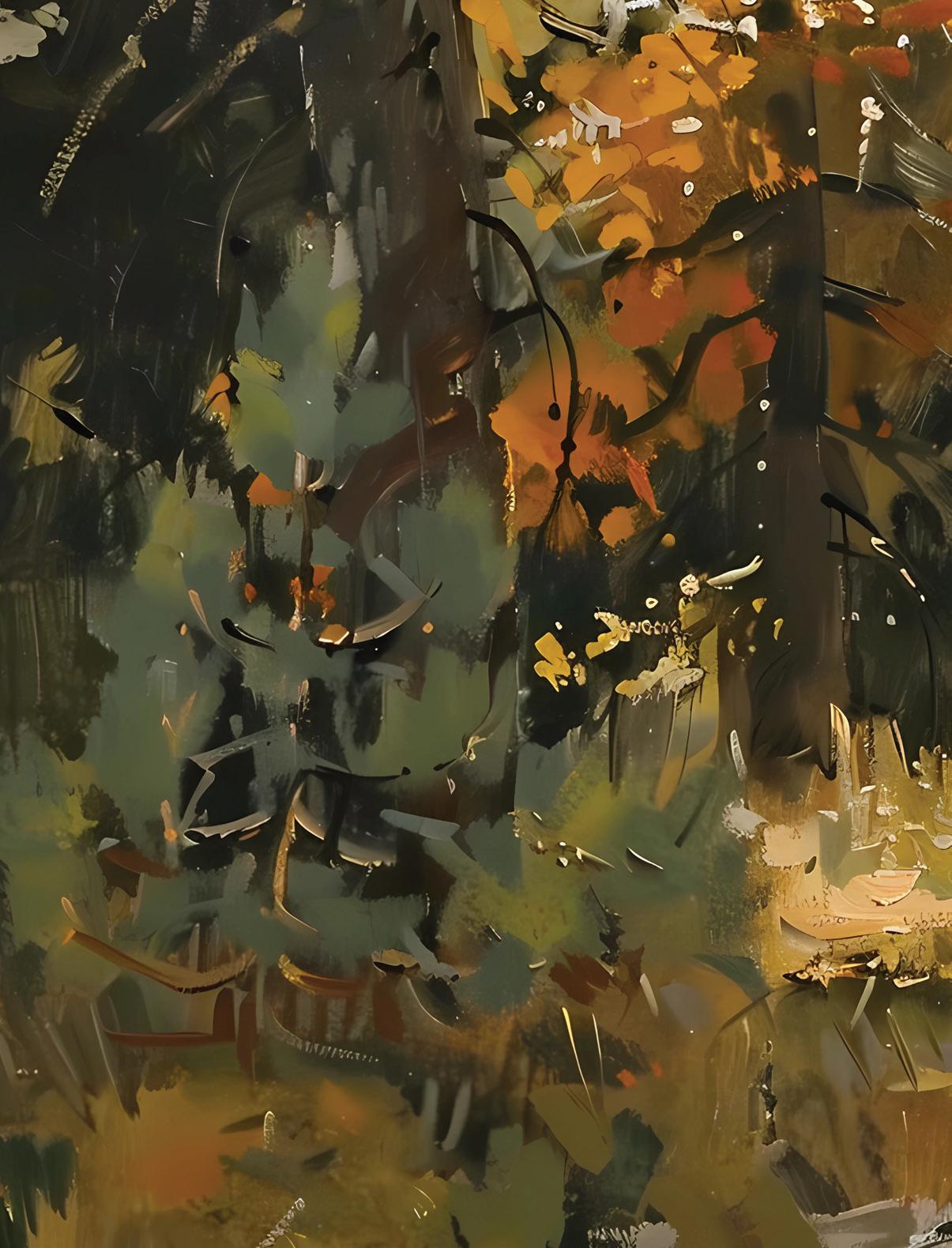
Bloody Bones
If you’ve grown up in these hills, chances are you’ve heard the name whispered at least once—Bloody Bones. Folks usually say it low, almost like they don’t want the dark thing to hear its own name carried on the wind. It’s the kind of tale that clings to you when you’re walking home at night, the woods pressing close, and every twig snap makes your heart race.
The story of Bloody Bones didn’t come out of nowhere. Back in the old days, when cabins were scattered few and far between, parents had a way of keeping their children out of trouble. Fireplaces glowed, storms rattled the tin roofs, and if a child was acting up, there’d be a stern voice reminding them: “You best behave, or Bloody Bones will come for you.”
The back story runs deep. Some say Bloody Bones was once a man—a cruel soul who met a violent end near a creek bed stained with blood. Others tell it differently, calling him not a man at all but a spirit born from the mountains themselves, feeding on mischief and disobedience. Either way, his name stuck, handed down as a warning. Folks claimed he waited in dark corners—root cellars, hollow stumps, even under the stairs—biding his time, all bones and blood, ready to snatch up any who didn’t mind their elders.
I can still remember when my brother and I were kids, walking home after the school bus dropped us off or coming back late from a neighbor’s house. The shadows always seemed longer then, and every rustle in the brush had us looking over our shoulders. We didn’t know what the so-called “lesson” of Bloody Bones was supposed to be; we just knew he was out there somewhere, waiting, and that was enough to make us run the last stretch to the porch light.
What makes it stick with locals isn’t just the fright. It’s that it feels rooted right here in Appalachia, where stories carry weight and fear is used to teach lessons. Out past Hampton and Roan Mountain, kids swore they saw him crouched by the river, his bony fingers reaching out. Hunters told of hearing strange dragging sounds, like bones scraping rocks, when no one else was around. Some even said livestock would spook for no reason, eyes fixed on something just out of human sight.
Bloody Bones isn’t like the polished monsters you see in movies. He’s raw, close to home, and his story comes from the mouths of grandparents who meant every word when they used his name. Around here, he’s a reminder that the mountains don’t forget, and neither do the old spirits that linger in them.
So next time you’re out late, mist crawling low across the road and tree limbs creaking above you, remember this old mountain warning: walk straight, do right, and don’t tempt Bloody Bones. Because in these parts, some stories don’t stay stories—they watch, and they wait.








From On High
A Poem by Jonah Hilmon
As I look at the leaves of red, It reminds me and makes me think.
Of those drops of blood.
Perhaps with the leaves turning this red, And falling is a sign.
To remember the blood from on high.
When the leaves fall, they are like drops of blood, Like how Christ shed his blood from on high.
Perhaps this was a sign from the very beginning, That blood had to be shed from nails in a tree.
As I look at the red falling, and how it makes the trees lifeless, It gives me an image at how Christ may have looked, Bare, and without life, as he hung on that tree.
Christ shed his blood, till he was lifeless. The trees do the same, shedding their leaves till they are bare.
However, as I glance at the trees in the spring, I see: Their green has sprung back, and they are revived from the dead. A reminder to how Christ on that blessed third day, came back. His body being glorified, anew.
Perhaps this was a sign from the very beginning, Of a blessed and wondrous resurrection that would occur.
All of this, the trees and their falling leaves, Their bare husks and then their glorified bodies, Reminds me of that man, Jesus, who came –From on high.






October Fun!
Be sure to look for the Roan Mountain Magazine booth at the Fall Festival (at Erik Anderson Park on October 25)! We'll have three fun craft options for kids of all ages - all supplies provided.
We'll also be at the community Trunk or Treat (at Erik Anderson on October 31) with candy and small trinkets to hand out to Trick or Treaters!
We look forward to seeing everyone then!


A Visit with Jarrett's Orchard
By Amy Campbell Clark
There are few orchards in Tennessee, and how lucky are we to have one in our own backyard? Jarrett's Orchard contributes greatly to what makes our community so unique, and to the sense of tradition that makes it special.
Fall in our Roan Mountain community means cooler nights, crisp mornings, and of course brilliantly colored landscapes as trees change from their green summer wardrobes to their autumn cloaks of oranges, golds, and reds. Fall also means apple harvesting and we’re blessed to have the much-loved, multi-generation Jarrett’s Apple Orchard right here in our community.
William and Myra Jarrett began farming the land in the early 1900s. They would take their produce to Johnson City by wagon, selling it door to door. After a long day of selling it was often too dark to get all the way home so they camped overnight under the Valley Forge bridge.
Like many landowners then, they had a small orchard for their own use. Later, their son, Jesse, and his wife Carrie, purchased inherited parcels from Jesse’s siblings to develop the orchard as we know it today and planted the first apple trees in 1955. Some of those original trees, Stayman Winesaps, still exist.
In 1967, Jesse's son Harold began working the family farm full time, at the age of 17; 2025 marks his 58th harvest. In 1972 he married Beth Ann Stocton and the couple later had two daughters, Regina (now wife of Jon Buck) and Denna (now wife of Lincoln Shelton). And all these years later, it’s still a family endeavor. Harold and his first cousin, Ray, do most of the heavy lifting, Beth Ann and Denna work the apple house, Regina, a teacher at Cloudland Elementary, and her son Jace (the fifth generation), lend a hand after school and on weekends, and the whole family shares the load in pruning, planting, and harvesting.
There have been changes over the years. Back when most folks had root cellars, apples were mostly sold by the bushel and preserved, as the jars could be
Harold and Beth Ann on their wedding day, and on their 50th anniversary, October 20, 2022. Happy Anniversary!
Harold with his girls, Regina, and infant Denna in 1978.
Having lived his whole life on this farm, Harold can look at a tree and tell if the apples are ready.
kept longer in those dark, cool spaces. But over time it became clear that smaller amounts were needed, so Harold and Beth Ann began offering apples in smaller quantities, by the bag. They also began growing pumpkins and gourds, as well as garden produce such as tomatoes, sweet corn, cabbage, potatoes, and squash. They now offer 19 varieties of pumpkins and gourds and just this year they’ve added spaghetti squash to the list of produce – all of which is sold in the apple house. The family also leaves some apples on the trees when harvesting and in late October and November the public is invited to pick their own apples (call or check the Facebook page to learn when this starts).
Although the apple house is only open to the public from Labor Day until Thanksgiving each year, the work involved to keep the farm going is definitely a yearround effort. Pruning begins in December and takes a couple months to complete, brush has to be cleared, treating for insects and fertilizing, mowing the 20 acres planted in apple trees and around the garden plots, propagating cuttings for new trees, then planting and tending all the produce, which includes the endless battle of keeping deer from using the gardens as a buffet. And, of course, harvesting everything.
Farming comes with its own unique set of challenges, many of which are weather-related. “Last year it was so dry, we didn’t have as many blooms this year,” Harold said. And Hurricane Helene had a big impact on the farm, hitting right in the middle of their narrow selling window. Several trees were lost, fruit was blown off the trees, the road leading up to the farm was damaged and they were without power for 10 days. The Jarretts and neighbors worked together to repair the road and the Jarretts were able to reopen the apple house shortly after power was restored but it impacted their bottom line for the season.
When asked about the biggest challenges in operating a family farm, Harold said, “It’s hard to raise a family with farming. Agriculture is in the worst shape it’s ever been in, in my lifetime.” Crop insurance for orchards isn’t available in Tennessee due to the lack of orchards in the state, so there’s risk involved, as well. “Two minutes of hail can wipe out a whole season’s crop,” he added.
But running a family farm is rewarding, as well. Harold is always happy when a successful harvest is complete. And for Beth Ann? “I love all of us working together!”
This orchard is another unique part of what makes our community so special. Visiting Jarrett’s for apples, pumpkins and vegetables has become a tradition over the years. “We love seeing families – grandparents, parents and their kids, come back year after year,” Denna said.
Young Jace, learning to operate a tiller with guidance from Paw (Harold).



(Also



GRACE PLACE THE
By Reverend Hunter Greene
Do you remember the first time you wanted to be someone else? I’m not talking about those times in high school where we all went home devasted that God hadn’t made us richer, taller, skinnier, funnier, or any number of things that would help us forget about our deepest insecurities. No, I’m talking about those times when we were kids, when the life and example of someone else compelled us to dream big and shoot for the stars. These are the types of dreams that made us think we lacked nothing at all, and on the contrary, they convinced us we could be anything we wanted to be.
Halloween, which is right around the corner, sort of served this purpose in my life as a kid. I remember dressing up as my favorite Tennessee football players, different action heroes like the Power Rangers and Jack Sparrow, and even a cowboy resembling the likes of John Wayne (if I do say so myself). It was more than
childlike fun to pretend to be my heroes for a night – it was an empowering and inspiring night to imagine what my future might hold.
Knocking on the door of my thirties, I’ve given up my dreams of playing QB for the Vols or wrangling cattle out West, but I haven’t given up the practice of imitating those who inspire me. My momma always told me growing up that “birds of a feather flock together,” which was her way of telling me to keep good company, the sort who would keep me out of trouble. However, I’ve discovered great wisdom in these words over the years in the fact that we become what – or who – we behold and give our attention to.
These days, I spend my time trying to imitate the saints of God who have shown me what it means to follow the Way of Jesus. Some seasons this means that I’m focusing my reading, attention, and prayer on the notorious saints throughout church history, folks like Will Campbell, Martin Luther King, Jr., Dorothy Day, Dietrich Bonhoeffer, Billy Graham, Oscar Romero, Harriet Tubman, and so many more. In other seasons, I spend my days pondering the Godly influence of those hidden saints who have shaped and molded my life with their humility and grace, people like my grandparents, Preacher Phillips, Mrs. Ruby, Ms. Tina, Dr. Kenneson, and a whole host of others who called Roan Mountain and Carter County home.
Whether their names make history books or not, each of these saints have taught me that it takes a village to raise and disciple a Christ follower. Each of us need shining examples of faith, hope, and love – of Jesus – in order to become saints ourselves. In other words, we need mentors, pastors, teachers, friends, and neighbors to show us the ropes of following Jesus.
In a couple weeks, our candy dishes will be full, and trick-or-treaters will make their rounds filling

their buckets with as much sugar as their molars can handle. But in the hustle and bustle of that evening, I hope you’ll take some time to remember the day after Halloween, which is All Saints Day. All Saints Day is celebrated on November 1, the day following All Hallows’ Eve or “Halloween.” It is the day the church takes time to remember those who came before us, specifically those who blazed paths of following the Way of Jesus with love, compassion, and truth.
Halloween doesn’t just have to be about candy and costumes and scares. I think it’s also an opportunity to reflect on our dreams, who we are following, who we are dressing up as each day, who we are patterning our lives after, who we hope to become, and who we wish we were. Each of us have, no doubt, been blessed by the shining lights of saints in this community and beyond, and before we know it, we will likely find ourselves in stages of life not all that different than the ones they were in when we were first captivated by their example.
Perhaps this year might be a good time to think about who considers us their hero and given the chance, might pretend to be us for a day, for all the ways we have blessed their life. Perhaps it is a good time to consider what kind of legacy we are creating and what kind of path we are charting for our kids and ancestors to follow. What kind of mantle are we leaving behind for them to pick up and carry?
Lord knows ghosts and ghouls can’t hold a candle to the kind of fear that such questions often stir up in our souls, but there is no better time to try on the holy yoke of that saintly cloud of witnesses cheering us on. You never know, we just might find someone looking to us the way we’ve looked at the saints of God all these years. And that is how we will know we had fought the good fight, finished the race, and kept the Faith.
Prayer Requests
Please pray for Larry Hicks and his family as he battles with cancer.
Please send all general inquiries, church information, upcoming church events, and special prayer requests to Hunter at hillbillytheology@gmail.com.
Check out Hunter's Hillbilly Theology site: hillbillytheology.com/
(Linktree: https://linktr.ee/hillbillytheology )
Monthly Bible Verse: Hebrews 12:1
Therefore, since we are surrounded by so great a cloud of witnesses, let us also lay aside every weight and the sin that clings so closely, and let us run with perseverance the race that is set before us…
All Holler's Eve
A Spooky Mountain Tale by Diana Tolley
They’d stayed too long. Knowing their penchant for getting caught up in playing and talking, Mama had given them strict orders to start for home way before dark, so they wouldn’t be traipsing through the woods at night. Especially this particular night.
All Hallows Eve, they called it. Maudy Mae Clark called it Booger Night, seeing as how all the boogers from here to Timbuktu was supposed to be scaring the daylights outta’ folks. A smart girl like herself didn’t believe in haints and such, but her little brother sure did. Jed, her seven-year-old little brother, had been grumbling ever since they’d left their grandparent’s house.
“Tommy Wilson said ever’-body had better get on home on ‘All Hollers Eve’, cause that’s when the spirits of bad people come out of the fiery pit and try to take us Christians down to the devil.”
Maudy rolled her eyes and grabbed his hand to pull him up the hill a little faster, sure she could feel her brother’s heartbeat through his hand. “I done told you, Jed. Tommy ain’t got no sense and there’s no such thang as that. He was just tryin’ to scare you.” She believed this, she really did. Granny Clark had always said there wasn’t no need to be afraid of goblins and creepy crawlies, that they couldn’t hurt nobody who knowed the Lord. Maudy agreed whole heartedly, but then, she was level-headed and practically a woman. She wasn’t skeered of no demons or ghosts. For the most part, anyways.
“Tommy knows what he’s talkin’ bout, Maudy Mae. He’s seen a haint. He said there was an old woman lived up above his uncle Elbert years ago and she could turn into a black cat, on account of she was a witch.” The boy lowered his voice to a loud whisper, as if something that shouldn’t be, was listening. “Tommy said every night on Alls Holler Eve, his uncle would look out and shore ‘nuff, there’d be a big ol’, yeller-eyed, black cat walkin’ up and down the road. It’d let out a screech and a howl that’d turn your eyebrows white with fright, and shortly afterwards, there’d be a ghostly mist going up the road after it.”
“Stop it, Jed,” she said sternly. “I’m telling you, Tommy and them Buck Creek boys he runs with are full of bull-pucky. They were just fillin’ your head with nonsense to scare you. Now stop talkin’ about scary stuff and let’s get home. Keep your eyes and ears open for critters that actually ARE in the woods. Daddy’s gonna have our hide if we don’t hit our front porch before pitch dark. Now, come on!” She took off at a running walk, dragging him behind her. Jed yanked on his hand until she let go of it, but they both kept up the pace.
“Daddy said the bears ain’t out now cause of cold weather. Ain’t no wolves here’bouts neither, so you’d best be worrying about the
haints!” he said, breathlessly.
As they topped the last hill, the children could see smoke rising from the chimney at home. It looked welcoming, like a little beacon of safety. With sighs of relief, they ran out of the woods and down through the field, happy to be that close to seeing their parents. The moon came out, big and full, as the last vestiges of evening twilight whispered away into the dark. They’d made it just in the nick of time.
All they had to do was cross the fence, make it through the barn lot, then open the gate that led up to the house. It was familiar territory and no way could anything happen in that narrow space of time.
Maudy had one leg across the top wooden rail and was preparing to swing the other over when something hissed, long and loud. She froze, then looked around. Everything seemed normal as far as she could see; nothing moved. Not even any wind stirring. But the clouds picked that particular moment to completely cover the moon.
“Hurry up, Jed,” she told him, reaching down to grab the back of his jacket. It took a try or two but the little boy finally got a leg over the fence. “Let go, Maudy,” he said, jerking his coat out of her hand and pulling it down in a huff.
“Well if you’d hurry –” she began.
She’d barely gotten that last word out before she heard a deep, angry growl coming from the woods. Jed’s eyes were big as saucers as he looked at his sister. Not a word passed between the two as they both whipped around to look back the way they’d just come.
“Wh-what was that?” the little boy whispered. Before

Maudy could answer, a caterwauling scream filled the air, quickly joined by another. “It’s a HAINT!” Jed yelled at the top of his lungs. Trying to jerk his other leg over the top of the fence, he teetered, unbalanced as he flailed his arms. His sister jerked her hand out to grab hold of him and found herself falling off the rail. “Jed!” she shouted as they tumbled down sideways. Just as they hit the ground, a loud, horrendous bellow trumpeted right beneath them. Maudy screamed at the top of her lungs while Jed got choked on dirt from hitting the ground facefirst. His arms and legs were so wobbly he couldn’t even get up to run.
Still screaming like a banshee, his sister grabbed him by the coat and started draggin’ him across the barn lot so fast there was no time to get to his feet. His knee hit a rock and the boy yelled for all he was worth, spitting dirt out as they went. When the second long, mournful bellow sounded, Maudy screamed again and hit the gate full force. The old wrought iron fixture gave way immediately and down both children went in a tangle of arms, legs and coats.
Whatever kind of ghoul it was that they’d landed on had moved up right behind them and blew out a huge gust of air, as if getting ready to swallow them whole. As it made the next horrendous noise, Maudy felt the wind off its horrible, stinking breath on her legs.
“Lord Jesus!” she shouted. “Don’t let this demon have us, Lord!!” She scrambled, quick as a streak, to get to her feet, then grabbed her little brother by his jacket sleeve and half ran, half stumbled toward the house.
“We’s Christians, Lord! Don’t let the devil get us!” Jed cried out, tears streaking down his face as he tried to find purchase in the grass. “We been washed in th’ blood!!”
When Maudy finally fell into the yard, the little boy was right on top of her. They rolled around trying to get up without much luck. Sheer panic and fear had taken over. Crying so hard they couldn’t see, they hollered for their daddy, who’d already heard all the commotion and was running toward them. When he reached down
to take hold of his children, they both screamed so loud that neighbors up on top of the mountain later claimed to have heard them. Except the neighbors didn’t know it was the Clark children at all. They claimed to have heard the wailing of banshees on All Hallow’s Eve and that caused quite the commotion up and down the hollers of Buck Mountain for some time to come.
After several minutes, that seemed like eternity, Josiah Clark got his children up on the porch where their mother was waiting with open arms. Both were crying and talking at the same time, trying to tell their parents about the evil demon haint that had nearly took them to the fiery pit. It was another several minutes before they were calm enough to notice their father had his hands over his face while their mama was tryin’ real hard not to laugh.
“It’s true, Mama! All them ole’ scary booger tales are true! I never believed in ‘em before but now I know for a fact they’re real!” Maudy said, now with the snubs. “Well I believed all along!” said Jeb, hiccupping loudly.
“Young'uns,” Mama said, smothering a grin. “Take a look over yonder. That wasn’t no haint that was after you.” The children crowded closer and slightly behind their mother, peering around her to look. Maudy was trying really hard to hold Mama’s apron tail over her face.
“It was ol’ Betsy that y’all landed on when you fell off the fence,” Daddy choked out, trying real hard not to laugh. Mama slapped him on the shoulder and shook her head at him. “That ol’ cow got skeered more than both y’all together,” she told them.
“But … but, Daddy,” Jed whispered loudly. “We heard something in the woods comin’ after us.” Their father couldn’t hold it in anymore and laughed out loud. “I heard it too,” he said as he bent over to hold onto his knees. “That was two possums fightin’ over supper.”
Maudy straightened up, wiped her eyes and said out loud. “Well, of all the dickens I ever heard.”
“Maudy Mae, watch your mouth. And after you was just prayin’,” scolded her mother.
“Sorry, Mama. But it’s all Jed’s fault we got spooked; talkin’ bout all the booger tales he’s heard,” Maudy sniffed and scowled at her brother.
“Well it’s YOUR fault we was walkin’ so close to dark on All Holler’s Eve,” snapped Jed.
“All right, you two,” Mama said as she scooted them toward the front door. “That’s quite enough of that. It’s past supper and I’m pretty sure y’all are starvin’ by now.” As Daddy stood holding the door open, Maudy looked back at Ol’ Betsy. The cow stood staring toward the house, chewing her cud, unconcerned, like nothing bad had happened.
“Stupid cow,” she muttered under her breath, before turning to go inside. The door closed tight on the echo of her father’s laughter.
Meanwhile Betsy, the cow, turned and ambled toward the barn. On night’s like this, it was best to be safe inside, where nothin’ could get to a big ol’ heifer like herself. As her hind parts disappeared through the door of the weathered building, the full moon made its appearance from behind heavy clouds. And yellow, glowing eyes slowly blinked from the edge of the woods …
October Word Search Fun & Games
(For kids of ALL ages!)


Autumn Chestnuts
Columbus Day
Fall-O-Dendron
Football
Gourds
Halloween
Harvest Moon
Hayride
Homemade Soup
Hot

Scarecrow
Spooky Sweaters
Trick or Treat
Whitetail Deer

What are you thankful for?
We want to know what you're thankful for!
Draw us a picture or write a short essay telling us what you're thankful for. All ages welcome!
We'll publish some in the November issue and use some on our Facebook page.
Email drawings or essays to: amy@roanmountainmagazine.com or send via our Facebook Messenger.
October has a way of changing the air. Mornings bite colder, the evenings fall quiet sooner, and the yards we’ve been chasing all summer suddenly stop demanding so much. The season shifts, and with it comes a kind of unease—like walking through a field at dusk, where everything looks the same but feels different.
What’s unsettling about this time of year isn’t just the chill or the shadows. It’s the slowing down. The calls don’t come in as steadily. The grass no longer presses you forward. The full schedule you once struggled to keep now has empty spaces. And in those spaces, the worry creeps in.
Anyone in this line of work knows that feeling—the quiet before winter, when you start wondering what the cold months will bring. It’s not a ghost story, but it can feel like one: the fear of stillness, of work drying up, of standing too long without a plan.
That’s the scary part.
But here’s the lesson October holds: slowing down doesn’t have to mean stopping. This season is a reminder that growth doesn’t always look like busy yards and full trailers. Sometimes it looks like sharpening blades, repairing what’s worn, and getting yourself ready for the stretch ahead. Sometimes it means finding pride in the smaller jobs, finishing the details that summer’s rush didn’t leave room for.
I’ve learned this—sometimes the hard way. I’ve said yes too often in the heat of summer, stretched myself so thin that the work lost its shine. But fall doesn’t let you hide from that. The quiet brings it back to you— unfinished edges, rushed conversations, things you could’ve done better. And that can be uncomfortable. But it can also be a chance to reset.
Because reputation isn’t just made in the busy season. It’s tested in the quiet one.

LESSONS IN LIFE & LANDSCAPING The
Season of Shadows
By Ericka Hughes
So as the light fades and the season leans toward winter, don’t let the dark spook you. Finish the work with care. Respect the jobs you still have. And use the pause to prepare yourself—for the cold, for the spring, for whatever comes next.
The grass may be slowing down, but the growing isn’t over. The yard’s not the only thing changing. You are too.
Field Notes: October's Lessons
• Silence can be unsettling—but it’s also a teacher.
• A full schedule doesn’t define success. Steady work does.
• Fear grows in empty spaces. Fill them with preparation.
• Every job in the fall carries weight—make it count.
• Growth isn’t gone when the grass slows down. It just shifts to you.
THE LAST WORD
A Fall Staple: Flannel
By Noah Blair
Living in our beautiful mountain region provides us with many opportunities to explore and experience nature in ways that others, not from our region don’t. One of those opportunities is being able to experience every season and all each has to offer. The fall season is now upon us and is my personal favorite. Fall means a few of my favorite things are back and starting again for the year, things like football, hunting, and cooler weather!
Cooler weather means our attire changes, and this brings another of my favorites, maybe the best clothing item ever invented: the flannel shirt. The flannel shirt’s origin traces all the way back to 17th century Wales, where the working class developed the shirt's mixture
of soft, brushed wool fibers to provide warmth in the harsh environment while also offering durability to hold up against the hard work those who wore these shirts did daily.
The fabric was “napped” on one or both sides by rubbing it with a fine metal brush to raise the fibers from the loosely spun yarn; this process created the softness loved and universally recognized in flannel.
Before long, these shirts were loved by all of Europe. The term flannel also has German and French influences. The Industrial Revolution allowed mills to become more efficient at preparing the fabric, and offered easier accessibility to the wool used for flannel, which helped the flannel shirt to explode across the globe.
The Civil War in America heralded the first use of flannel inside military uniforms, a practice which lasted into the First World War. After WW1 came the Great Depression and with it came financial hardship which led to social classes breaking down and eventually everyone was in, you guessed it, flannel.
Flannel has been a mainstay in American culture ever since and has long been a popular clothing option for those needing durable but comfortable clothes to work in. Carhartt, the redneck version of Gucci, was built around Mr. Hamilton Carhartt’s promise that his clothing (mainly flannel products) would be an “honest value for an honest dollar.”
So here’s to the best time of year! Turn on that football game, kick off those hunting boots and camouflage, and put on that ol’ faithful: flannel!
Remember God Loves YOU!

Male or female, young or old, flannel has long been a colorful and comfortable way to stay warm during the cooler months of the year.












